Tired of struggling with wobbly cabinet doors that never seem to stay shut? It’s time to take matters into your own hands and learn how to fix those pesky kitchen cabinet hinges once and for all. No need to call a professional or spend a fortune on replacements – all it takes is a little bit of know-how and some basic tools. In this article, we’ll walk you through the process step by step, from identifying the problem to applying the right solution. Get ready to transform your kitchen cabinets from frustrating eyesores into functional masterpieces with our foolproof guide on how to fix kitchen cabinet hinges.
How Do I Know If My Cabinet Hinges Are Damaged?
To determine if your cabinet hinge is damaged, there are a few signs you can look out for. Firstly, check if the cabinet doors are misaligned or not closing properly. If they appear crooked or leave gaps between them when closed, it is likely that the hinge are faulty. Additionally, listen for any squeaking or creaking noises when opening or closing the cabinet doors, as this could be an indication of hinge issues. Lastly, inspect the hinge visually for any visible damage such as rust, bent metal, or loose screws. Paying attention to these signs will help you identify if your closet hinge needs repair.
Why Might Your Cabinet Doors Become Saggy Or Loose?
Cabinet doors can become saggy or loose over time due to various reasons. One common cause is heavy usage and constant opening and closing of the doors, which can weaken the hinges’ grip on the cabinet frame. Another reason could be improper installation or inferior quality hinge that cannot withstand the weight of the door. Exposure to excessive moisture or changes in humidity levels can also lead to hinges losing their stability and causing doors to sag. Understanding these causes will assist you in finding appropriate solutions to fix saggy or loose cabinet doors.
Understanding Kitchen Cabinet Hinges
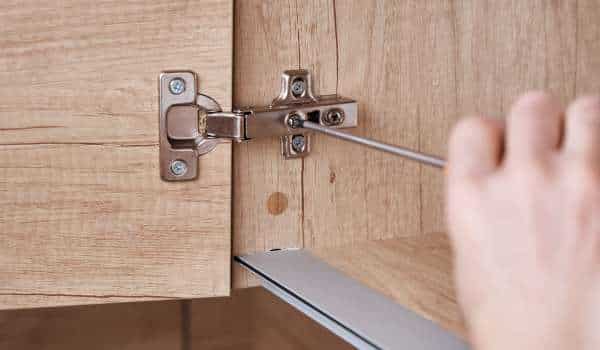
Before attempting to fix kitchen cabinet hinge, it’s important to have a basic understanding of their different types. The most common types of kitchen closet hinge are butt hinge, concealed (or European) hinges, and pivot hinges. Butt hinge consist of two rectangular plates connected by a pin and are mostly visible from the outside of the door when it is closed. Concealed hinge offer a cleaner look because they are hidden inside the door and cabinet frame. Pivot hinge allow full 180-degree rotation for easy accessibility and convenience.
Identifying Common Problems
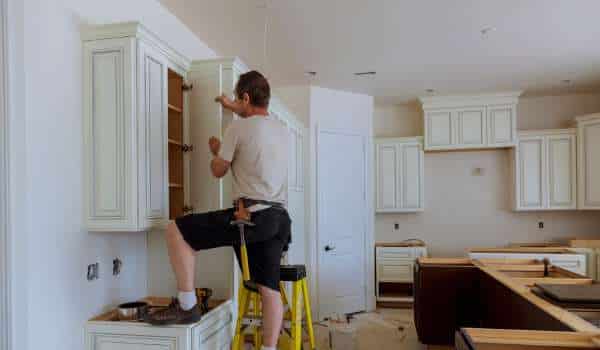
Several common problems can arise with kitchen cabinet hinge over time. One issue is loose screws, which can cause the hinge to wobble and the door to become misaligned. Tightening the screws is usually a simple fix for this problem. Another common problem is worn-out or damaged joints, leading to difficulty in opening or closing cabinet doors smoothly. Rust and corrosion can also affect hinge performance, causing stiffness or friction when operating the doors. By identifying these common problems, you can address them appropriately and restore functionality to your kitchen closet hinges.
Tools And Materials You’ll Need
- Screw
- Screwdriver
- Drill
- Hinges
- Mild Detergent
- Warm Water
- Silicone Spray
- Petroleum Jelly
- Clothes
- Wood filler
Step To Step Guide Fix Kitchen Cabinet Hinges
Step 1: Tightening Loose Screws
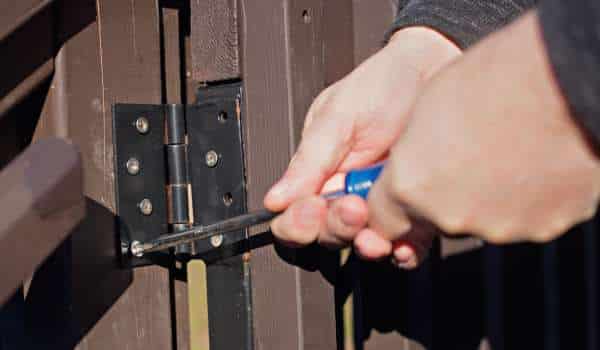
Inspect your cabinet hinges and identify any loose screws. Using a screwdriver, tighten the screws carefully to secure the hinge firmly in place. Avoid overtightening as it can strip the wood or damage the hinge.
Step 2: Adjusting Misaligned Hinges
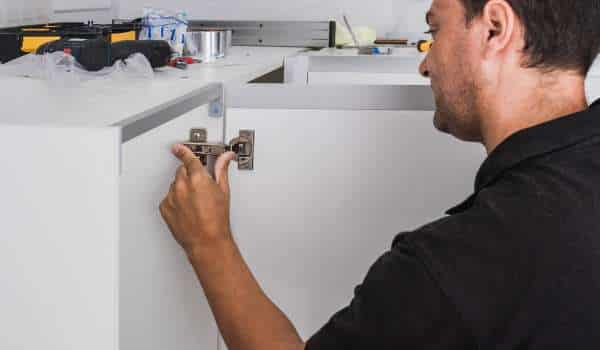
If your cabinet door is not properly aligned, it may be due to misaligned hinge. To adjust them, loosen the screws on both the door and cabinet side of the hinge using a screwdriver. Gently align the door to its desired position and then tighten the screws.
Step 3: Replacing Damaged Hinges
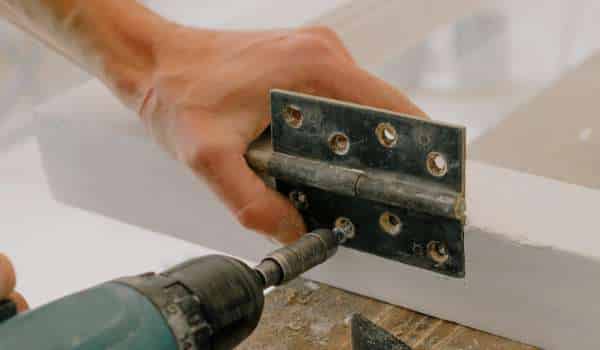
In some cases, tightening or adjusting may not resolve the issue if your hinges are damaged beyond repair or have reached their lifespan. To replace damaged joints, start by unscrewing and removing them using a screwdriver or drill. Remember to note down their size and type for purchasing suitable replacements. Install the new hinge following the manufacturer’s instructions.
Step 4: Lubricating Hinges For Smooth Operation

To ensure smooth operation of your kitchen closet hinges, it is important to lubricate them regularly. Start by cleaning the joints with a mild detergent and warm water solution to remove any dirt or grime. Once dry, apply a small amount of lubricant, such as silicone spray or petroleum jelly, directly onto the hinge joints and pivot points. Use a clean cloth to wipe away any excess lubricant and test the door’s movement to ensure it opens and closes smoothly.
Step 5: Concealing Damaged Areas
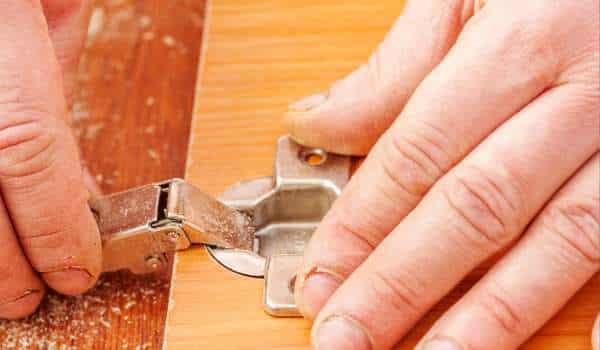
If you have minor damage on your kitchen cabinet doors or frames that cannot be fixed easily, there are methods to conceal these areas. One option is using wood filler to fill in scratches, dents, or holes. Apply the wood filler with a putty knife, making sure to smooth it evenly over the damaged area. Allow it to dry completely before sanding it down and applying touch-up paint or stain to match your cabinets’ finish. Another option could be using decorative molding or trim pieces to cover damaged areas creatively.
Preventative Maintenance Tips
To keep your kitchen closet joints in optimal condition, it is important to practice preventative maintenance. This will not only extend the lifespan of your joints but also ensure their smooth operation. Here are some tips for maintaining fix your cabinet hinges:
1. Regularly inspect and tighten screws
Check the screws that hold the hinges in place to ensure they are secure. Loose screws can cause misalignment and may lead to further damage if left unchecked.
2. Keep hinges clean
Dust and debris can accumulate on the hinge joints, affecting their performance over time. Regularly clean the hinges using a mild detergent and warm water solution, followed by drying with a soft cloth.
3. Lubricate periodically
To maintain smooth movement, lubricate the hinge joints every 6 to 12 months or as needed. Use a silicone spray or petroleum jelly for lubrication, applying it sparingly to avoid excess buildup.
4. Avoid excessive weight
Avoid overloading your cabinets with heavy items as this can put strain on the hinges and cause them to wear out faster.
How Often Should I Lubricate Cabinet Hinges?
To keep your cabinet hinges in optimal condition, it is recommended to lubricate them every 6 to 12 months. However, this frequency may vary depending on factors such as usage, humidity levels, and environmental conditions. If you notice any signs of sticking or difficulty in opening or closing your cabinet doors, it may be an indication that lubrication is needed sooner.
Regularly inspecting your hinge for any signs of wear or damage is also important. If you notice rust, corrosion, or excessive squeaking even after lubrication, it might be time to consider replacing the joints entirely.
What Is The Lifespan Of Cabinet Hinges?
The lifespan of closet joints can vary depending on several factors such as quality of materials, installation technique, usage patterns, maintenance practices, and environmental conditions.
Generally speaking, high-quality joints made of durable materials like stainless steel or solid brass can last anywhere from 15 to 20 years or even longer with proper care. However, cheaper hinges made of lower-grade materials may have a shorter lifespan and require more frequent replacements.
Regular maintenance and inspections can help identify any signs of wear or damage early on, allowing you to address them promptly. If your hinges are showing significant signs of wear, such as excessive friction, rust, or loose screws that cannot be tightened, it is advisable to replace them to avoid further issues or potential damage to your cabinets.
Conclusion
Maintaining the functionality fix of kitchen cabinet hinges is essential for smooth operation and prolonging their lifespan. By following preventative maintenance tips such as tightening loose screws, lubricating regularly, keeping the joints clean, and avoiding excessive weight on the cabinets, you can ensure optimal performance. Additionally, knowing how often to lubricate your joints and understanding their lifespan will help you plan for necessary maintenance and replacements accordingly. With proper care and attention, your kitchen closet hinges will continue serving their purpose effectively for many years.





